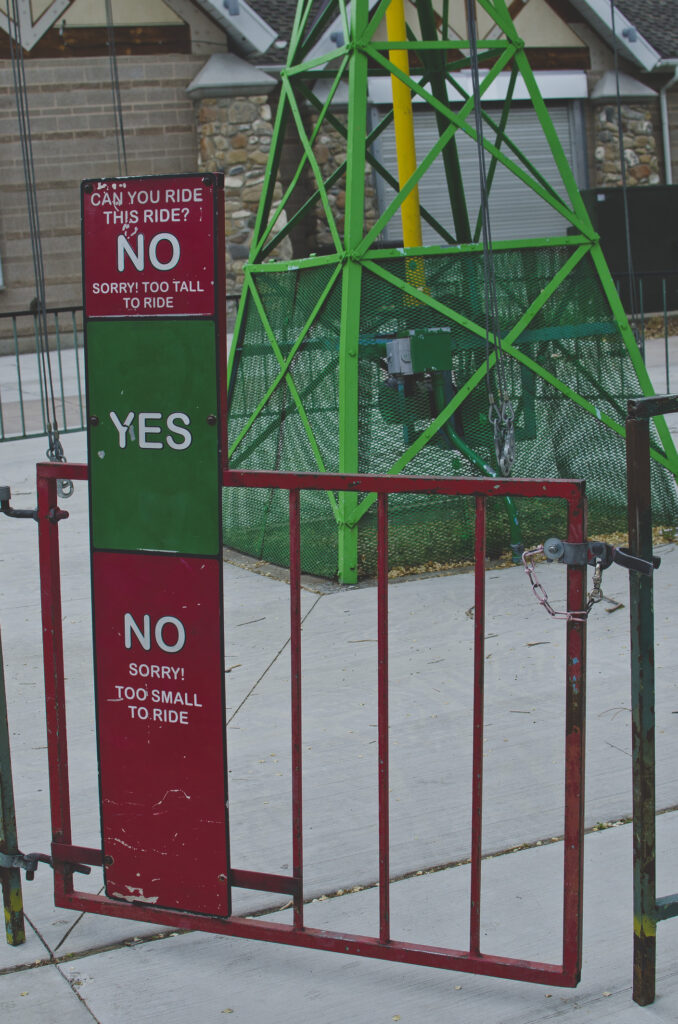How do amusement parks differentiate themselves? The most obvious answer is through their rides and attractions, which often become the focal point for advertising and branding. However, a more overlooked aspect is amusement park signage.
That’s because amusement parks flourish and falter by the strength of their themes. From the wide cast of well-known characters at Disney World to the niche fairy tale stories at the Efteling in the Netherlands, amusement parks use music, set dressing, voiceover upon entry, and more to establish a robust and memorable theme.
Amusement park signage is critical to keeping that theme consistent throughout the park. Think of signage as an opportunity to keep guests safe and enhance their experience in a way that simultaneously surprises and delights.
Why focus on amusement park signage?
Amusement parks seem larger than life. Magic Kingdom at Walt Disney World Resort in Florida welcomed roughly 17 million guests in 2022 alone. Since there are more than 400 amusement parks in the United States, effective signage is a must to keep that volume of footfall safe.
It’s a complicated, strategic endeavor to place amusement park signage at key areas throughout the park. Experts are brought in to ensure signs convey necessary information, such as:
- Height, age, and weight restrictions
- Information regarding medical conditions
- Any other potential risks associated with rides and attractions
Without proper signage, parkgoers are at risk of injury or worse, the repercussions of which could spell disaster for a park due to negative publicity, lawsuits, and reputational damage. Litigation damages are typically based on the severity of any injuries, costs of medical expenses, loss of income or opportunities, pain, and the potential for a full recovery.
Lawsuits can and do occur. In 2023, a woman sued Disney World over injuries sustained during a waterslide for $50,000 in damages. Eight years earlier, a woman was awarded $1.5 million due to an injury suffered at Coney Island in New York because she was not warned about the dangers of riding a roller coaster with a neck injury. Comprehensive amusement park signage can help prevent injuries and subsequent lawsuits.
When are amusement parks liable?
Amusement parks should check the laws in their state to confirm liability standards. But generally, an amusement park can be liable for negligence if its management fails to provide reasonable care through:
- Improper operation of rides
- Lack of proper instruction given to guests
- Insufficient signage warning guests about potential risks
Use signage to help your guests and staff
Amusement park signage is not just crucial for guests—it also aids employees in operating rides properly, giving instructions on how to use the rides, and when performing inspections. With proper training, employees can intervene when guests fail to follow safety instructions, preventing injuries and resulting lawsuits.
As such, employees should be made aware of different types of signs, including:
- Safety signs
- Navigational signs such as park maps and directional signs
- Educational and interpretive signs
Consider communication barriers
Amusement parks are inclusive areas catering to guests visiting from the local area and potentially across the globe. Multilingual and differently-abled guests make providing signage that accommodates as many languages or other barriers to communication as possible more critical than ever.
For instance, amusement parks can invest in warning signs written in Spanish in an area with a prominent or growing Spanish population. Signs can also be updated with internationally recognized graphics, removing the language barrier. This signage can also be informed by the park’s theme, using exciting branding to draw the eye to important messages. Addressing language barriers can help parks avoid costly litigation, as evidenced by a 2016 lawsuit in which a 38-year-old Spanish-speaking man with a heart condition passed away because he could not read the English warning signage posted at a ride at Universal Studios.
Through creative problem-solving, signage can be more inclusive and even help enhance a guest’s experience. Remember that the more intense a ride is, the more safety signage it will require. Consider incorporating digital signage that can cycle through multiple languages or incorporate videos or other graphic elements. Employees can and should update signs quickly when necessary, installing temporary signage warning of events such as weather changes.
Protection beyond signage
Given the seriousness of amusement park injuries and the consequences of litigation, amusement parks should do everything they can to prevent risk. Key to that is investing in comprehensive insurance.
With McGowan Program Administrators’ Amusement & Entertainment Insurance, amusement parks can have peace of mind in knowing they are protected. By removing that worry, amusement parks can focus on creating the memorable experiences their guests crave.
Contact us today to learn more about how comprehensive Amusement & Entertainment Insurance can help you in protecting the fun of your guests.


